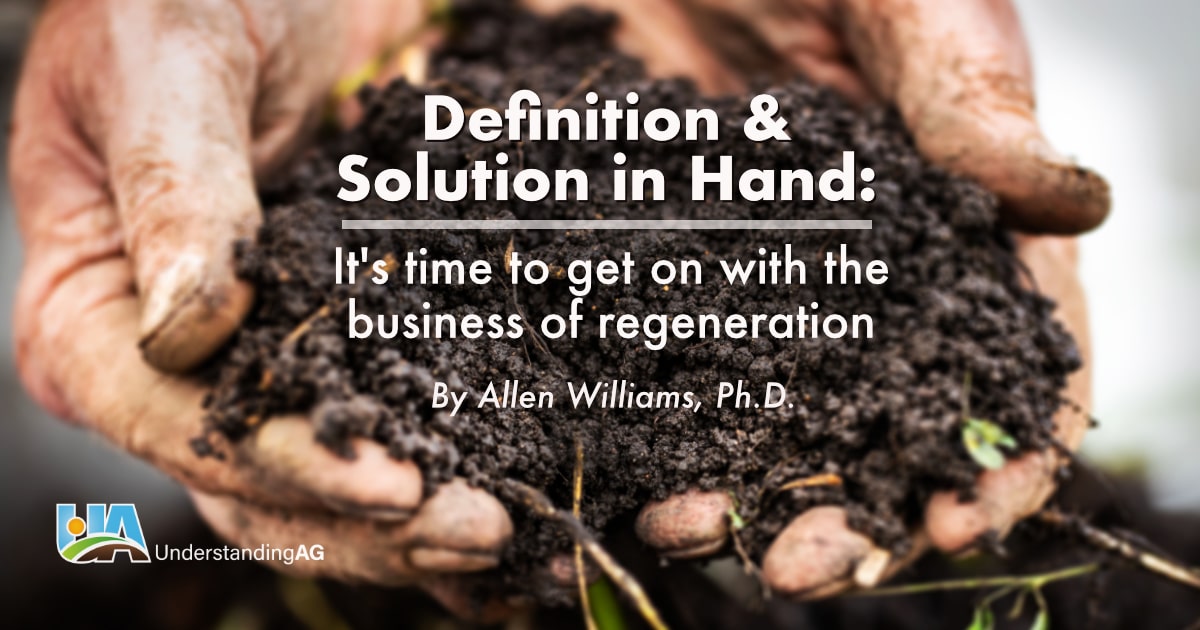
As a regenerative farmer and consultant, I see the enormous potential of restoring the health of our living and life-giving soil. However, I also see the potential for regenerative agriculture to become a broad and misleading brush by which some companies can disingenuously greenwash their sustainability efforts, confuse consumers and devalue the currency of legitimate regenerative agriculture efforts.
In a recent Fortune magazine piece titled, “Why Walmart’s quest to be a regenerative farming pioneer is falling short,” writer Rachel Hellman cites a recent study in the research journal, Frontiers in Sustainable Food Systems, writing, “With little regulatory supervision surrounding the definition of regenerative agriculture, there’s no mandate for Walmart or its competitors to include specific terms or measurables.”
There’s considerable merit in that statement but the absence of “regulatory supervision” should not preclude those of us who are leaders in the regenerative agriculture movement from establishing that definition. Who better to set the bar, than those who pioneered its modern-day practices?
In fact, my fellow regenerative ag partners at Understanding Ag and I have crafted a definition based on our experience as regenerative farmers, educators and advocates. We believe it accurately reflects what regenerative agriculture is and what its potential outcomes can be. That simple definition states:
Farming and ranching in synchrony with nature to repair, rebuild, revitalize and restore ecosystem function starting with all life in the soil and moving to all life above the soil.
To bring that definition to life in the context of our farming and ranching operations requires a long-term, systemic approach, using a suite of soil health-improving principles and practices. Perhaps most importantly, it requires that producers first acquire a practical, yet thorough understanding of those principles and practices. This critical education component is far too often overlooked or ignored in existing regenerative implementation programs. Without a solid understanding of the Six Principles of Soil Health, the Three Rules of Adaptive Stewardship and the Four Ecosystem Processes (collectively known as 6-3-4™), the likelihood of a producer’s regenerative success is extremely low. Producers cannot implement what they do not fully understand.
That’s why several of my fellow regenerative farmer/ranchers and I created the non-profit Soil Health Academy. We know that foundational education is key, so SHA provides on-farm and hands-on, expert instruction and follow-up to help farmers and ranchers understand, then successfully apply, these principles to regenerate the health of our soil, farms, food and futures.
Finally, we also recognized the need for a regenerative agriculture verification program that verifies the application of key context-based, regenerative principles and practices in agricultural operations—one that meets producers where they are and measures and incentivizes continuous regenerative advancements. Regenified™ was conceived by the regenerative farmer-consultants at Understanding Ag for the purpose of establishing those standards, protocols and on-going, on-farm measurements. We believe it represents the gold standard in regenerative verification.
Because regenerative agriculture is of growing interest to consumers, particularly when it is framed in terms of bigger-picture advantages like slowing climate change, improving soil health and increasing the nutrient density of food, such a verification program provides assurance for consumers that food reportedly grown regeneratively is, in fact, grown using context-based 6-3-4™ principles and practices and not greenwashed with unsubstantiated or misleading marketing claims.
Academics and politicians may squabble over the definition and measurement of regenerative agriculture, and likely will for decades to come, but we farmers and ranchers have made our living solving problems, not debating them. The world needs regenerative agriculture now. There is a definition, and there is a method to verify its application.
Let’s get on with the urgent business of making regenerative agriculture “common ground for common good.”
